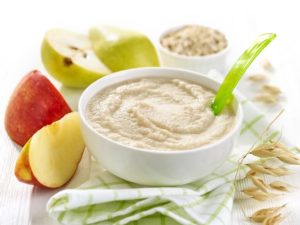Expressing milk means that you can let your breast milk flow out of your breast without breastfeeding your baby. Different methods can be used for this. Either you express the breast milk with your hands or you use a manual or electric breast pump.
Which method is best depends entirely on your personal feelings. At first, expressing the milk by hand is very gentle. However, mothers who produce a lot of breast milk sometimes have to massage their breasts from the top to the nipples for a long time. This can sometimes be very strenuous and also tedious.
Pumping Milk And Obtaining The Right Amount For The Baby To Drink
This is why many breastfeeding mothers like to use a breast pump. Devices of this type are also very gentle on the breast, they are extremely handy and they are characterized by their particular efficiency.
No matter how you want to express your milk: Storing breast milk is very simple and uncomplicated. You can either deposit the milk in special bottles or use other containers to store it in the refrigerator or freezer. This way you can feed your baby at a later time if necessary.
Table of contents
Pumping Milk Offers Many Advantages
There are many reasons why women pump their milk. If, for example, you are away from your baby for several hours due to scheduling commitments, he or she can still get the valuable nutrients from your breast milk.
Even if you are out and about with your child and don’t have the opportunity to give your little treasure the breast when it is hungry, you can give the baby the milk you pumped beforehand in the appropriate amount to drink.
This gives you the good feeling of knowing that your child is well taken care of. After all, breast milk is the best thing a mother can give her child. Last but not least, there are mothers who fear that the process of breastfeeding could adversely affect the appearance of their breasts.
For this reason, they sometimes decide against breastfeeding, but on the other hand, do not want to deprive their baby of the valuable breast milk in a suitable drinking quantity. Pumping milk is also beneficial for them.
Good Reasons For Pumping Milk
Premature babies sometimes do not yet have the strength to suckle extensively at their mother’s breast for a long time. In this case, pumping milk is essential to ensure the best possible supply of nutrients.
Working mothers who have a babysitter look after their baby from time to time need to be flexible. For example, breastfeeding cannot always take place when the little one is hungry. Therefore, pumping milk is a key advantage because the baby can drink the milk pumped in the morning and benefit from the full nutritional content.
Moreover, there are situations in the life of a breastfeeding mother when her baby is not hungry and therefore does not like to drink. However, the breast milk still pours in. Thus, the breasts often become plump, full, and heavy after a short time.
Always Pump The Ideal Amount For The Baby To Drink
When the breasts are too full, they become taut and can cause pain. In order not to let the valuable breast milk drip out unused, you can give the baby the right amount to drink at a later time.
All you have to do is express milk and then store the breast milk. Both expressing and storing milk is very straightforward – even if it feels a little unusual at first.
Some mothers even report that they feel like a “cow being milked” when expressing milk. Certainly, this comparison is misleading, because breastfeeding a child, or rather providing it with the precious “nutrients of the world”, is the greatest gift a mother can give her child – besides lots of love and affection.
Tip:
Pumping milk not only offers more flexibility in the daily life of mother and child. It also helps stimulate milk production or maintain the mother’s milk flow. The more often you express milk, the more milk will form in your breasts.
This Is How You Can Express Milk
Breast expressing is a very gentle method. You only need your hands. At first, it takes a bit of getting used to and certainly a bit of effort. But manual milk expressing is gentle on the breasts and nipples, although it can be a relatively time-consuming process compared to expressing milk with a pump.
It is important that you wash your hands thoroughly before expressing milk. Then place your thumb above the nipple. Position the other four fingers underneath. With your hand, you visually form a kind of semicircle around the areola. Then press and move your fingers evenly in the direction of the rib cage.
Obtain The Right Amount For The Baby To Drink – Be Patient When Expressing Milk
Repeat this procedure several times while expressing breast milk. In the course of this, you can also gently move your hand around the areola. Apply the pressure that you feel comfortable with.
The distance between your fingers and the nipple should be about three to five centimeters. To collect the breast milk, you will need a sterilized container with as large an opening as possible.
It sometimes takes some practice to ensure that the milk is completely expressed. Collecting the breast milk also needs to be “learned”. But don’t worry: If a few drops spill at first, it’s not a “big deal”. The next time you pump milk, you will already be used to this new “technique” and feel more confident overall.
Pumping milk with an electric breast pump is fast and effective. Such a device usually consists of a container, a lid device with a hose, and a suction funnel. This is placed on the nipple. At the push of a button, it sucks on it, and you can adjust the suction individually.
So you don’t have to worry that pumping milk is painful or involves pulling. As soon as the suction is generated, you can stroke the breast milk in the direction of the vestibule a few times with your fingers to accelerate the milk pumping. The breast pump then pumps the breast milk independently via the tube into the connected container.
The principle of expressing milk with a mechanical or manual pump is similar. Here, too, it is necessary to place the suction cup on the nipple. However, instead of being able to use electrical power simply by pressing a button, you have to operate a pressing mechanism.
Depending on the breast pump, you may have a bellows or a special pressure device that you have to press for each pumping stroke. While the electric breast pump takes about five to 10 minutes, the mechanical version takes between 15 and 50 minutes until the breast milk has completely flowed out.
Tip:
If you have opted for a high-quality breast pump, you can benefit from the fact that such a device mimics the baby’s sucking movements. Pumping is therefore based on natural occurrences and does not hurt.
Which breast pump is best for you depends on several factors. First and foremost, your personal sensation plays a role. You should also consider how much milk your breasts produce and how often you need to pump.
Pumping out larger quantities by hand several times a day takes time and energy. In this respect, an electric breast pump is more suitable. Experience has also shown that working mothers or breastfeeding women who are generally on the go a lot are better off with an electric pump. This saves them valuable time and energy when expressing milk.
Tip:
The purchase of a breast pump with an electric motor is usually associated with high costs. An inexpensive alternative for cost-conscious mothers is to borrow the electric breast pump temporarily from a pharmacy or drugstore you trust.
Under certain circumstances, health insurance companies will even cover the rental fees. Ask your gynecologist or pediatrician for advice or ask them to write an appropriate prescription.
The Correct Position For Expressing Milk
If you want to express milk, make yourself comfortable in an armchair or on the couch. Sit upright and use a pillow or other support to give your breasts the best possible support when expressing milk.
If you are under stress and tension, it can sometimes take a while for the milk to start flowing. To stimulate the flow of milk, it is best to stroke with the flat of your hand from the rib cage to the nipple.
Repeat the process and wait in peace until the milk flows. Pumping milk from one breast should only be stopped when no more milk flows out. Only then change the position of the suction cup and place it on the other nipple.
Tip:
There are so-called double breast pumps for mothers of twins, which make it possible to express milk on both breasts at the same time. What seems so simple at first glance, however, usually requires a certain amount of practice. After all, every mother has only two hands.
Measuring The Right Amount For The Baby To Drink
You can easily measure the amount of fluid for your baby before feeding. The right amount for the baby should be poured directly into a plastic or glass bottle.
If you decide to use a plastic bottle, it should be a product without plasticizers or bisphenol A. Cheap bottles usually contain chemical substances that could endanger the child’s health.
It is important that you boil or sterilize the container that contains the baby’s drinking quantity before filling it, if possible. This eliminates germs and other pathogens and they no longer pose a health risk.
Storing Breast Milk Correctly
After expressing milk and filling the bottle with the appropriate amount for the baby, it is important to note the expressing date on the container. Only then can you deposit the breast milk in the refrigerator or freezer.
Tip:
Thawed breast milk should be used within 24 hours and not frozen again afterwards.
Storing Breast Milk – This Is How It Works
- Breast milk that you have just pumped can be stored in the refrigerator at a maximum of 4 degrees Celsius for up to five days.
- Generally, breast milk will last up to two weeks in the freezer compartment of the refrigerator.
- If you want to store breast milk in the freezer or fridge, it can be stored at -18 degrees Celsius for about 6 months.
Notice:
In principle, food in the freezer can be kept for several years. Because the structure of the milk can change after about three weeks, it is recommended with regard to storing breast milk not to exceed the duration of half a year.
Certainly, by freezing breast milk, some valuable ingredients are lost. However, compared to industrially produced baby food, frozen breast milk is still more nutritious and therefore more valuable.
Warming Breast Milk – The Right Way To Do It:
Breast milk that you take out of the freezer to feed to your baby should be thawed slowly and gently. The best way to do this is to place the frozen breast milk in a bowl of warm water. Alternatively, you can thaw it under warm running water.
It is even gentler to warm up breast milk if you thaw it overnight in the refrigerator. However, never use the microwave to defrost or warm breast milk. Microwaves kill the valuable ingredients in the milk.
Important Information About Expressing Milk
The sooner you start expressing milk, the sooner you will get used to it. At the same time, this can stimulate the flow of milk. You can also increase the amount of milk by drinking malt beer from time to time. Gentle massages and warm compresses can also help to increase milk production.
In This Way, You Can Trigger The Flow Of Milk Even More Easily:
Sometimes it takes a little time for the milk to flow out. You can speed up this process and ensure that the right amount of milk flows out for the baby by getting comfortable and relaxing in a quiet place.
Warm clothes and compresses are helpful if you are having difficulty getting the milk flow going. In addition, it often helps to have a photo of your baby on hand. In fact, for many mothers, having a picture of their little treasure close at hand stimulates milk flow.
Do you have problems with latching on? You can also get your baby used to breastfeeding.
Sources
https://www.tausendkind.de/magazin/wissenswertes/entwicklung/ratgeber-stillen
https://www.oekotest.de/kinder-familie/Ratgeber-Muttermilch_108708_1.html













1 thought on “Pumping Milk – Why, How, And How Much?”